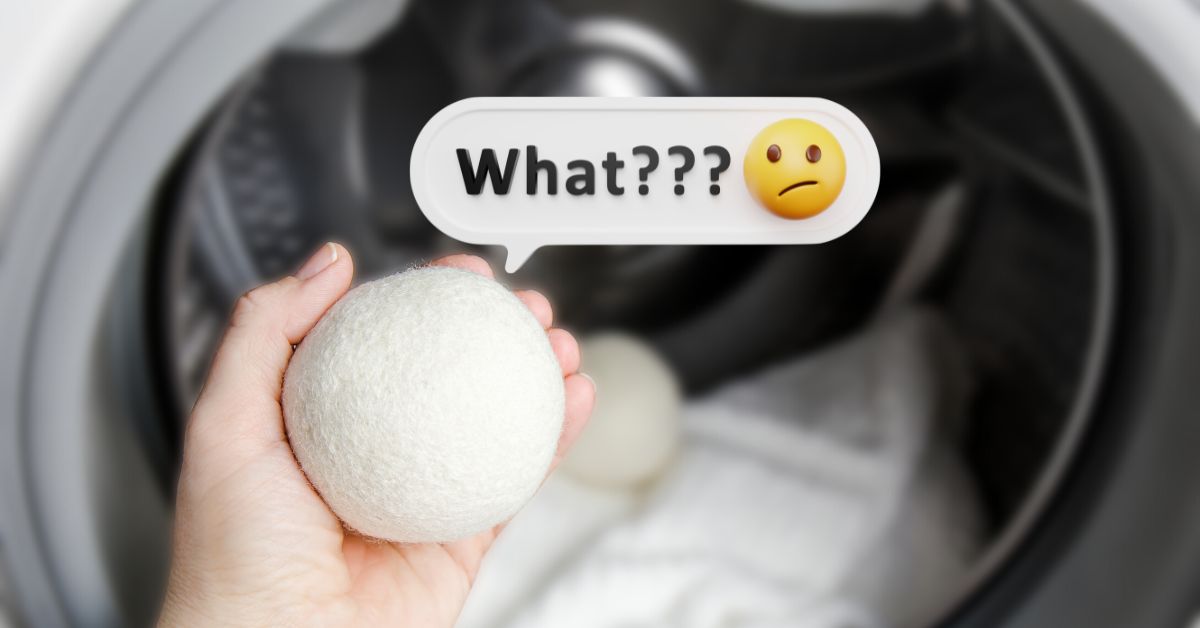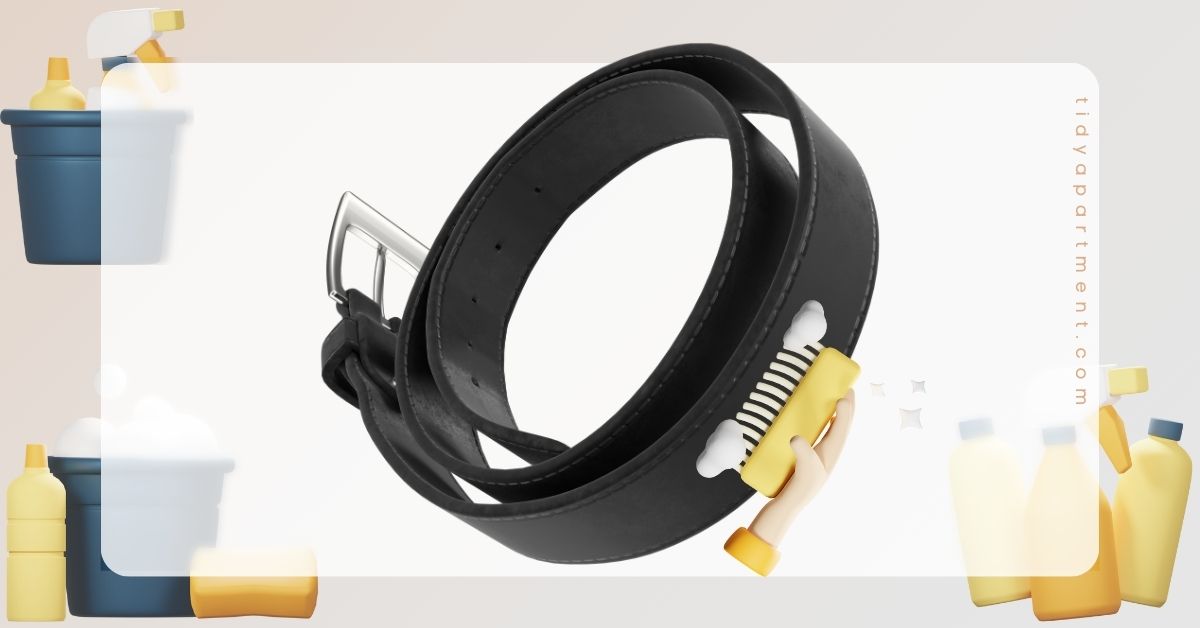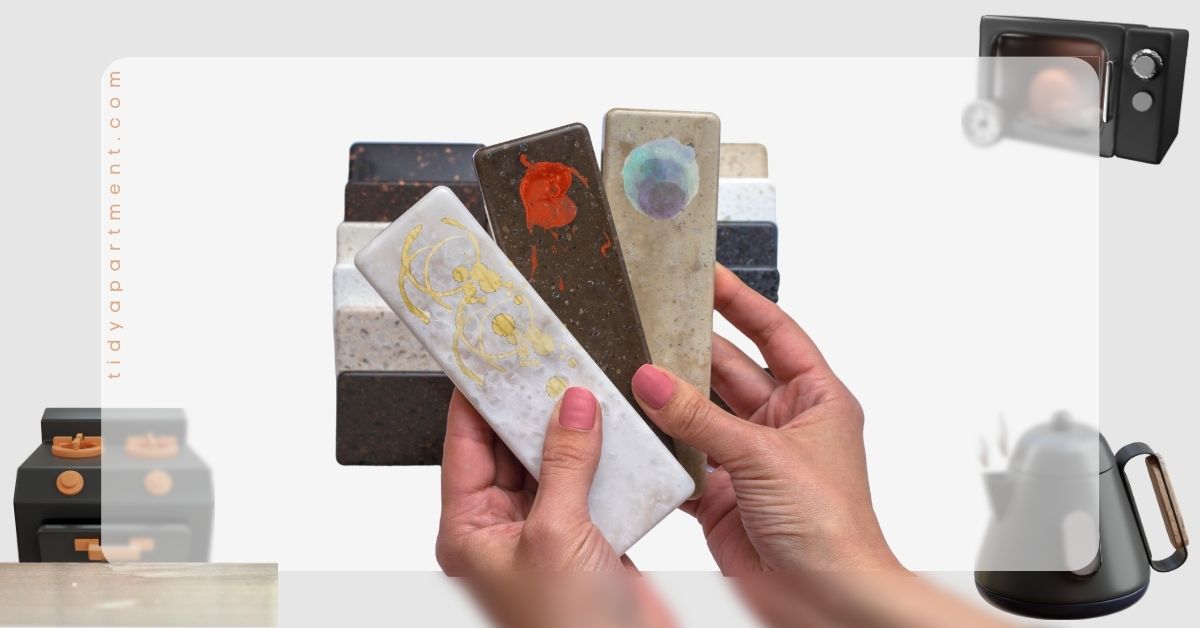Laundry is a chore that demands attention to detail and a careful approach. However, whether you can mix colors in the dryer often arises when drying clothes.
Mixing colors in the dryer can be a convenient, time-saving technique, but it also carries potential risks.
Page Content
Can You Mix Colors in the Dryer?
Mixing colors in the dryer can pose a risk of color transfer, potentially leading to color bleeding or staining.
Separating colors when using the dryer is recommended to minimize the risk of color transfer in clothes. This means drying light-colored garments separately from dark-colored ones.
In addition, the dryer heat opens up the fabric, helping the transfer of color onto other garments. Color transfer often happens with new clothes. However, a few clothes may still transfer their color to others even after a few washes.
We’ve found six ways to separate laundry. To know more, read: How to separate laundry?
Why Does Color Bleed in the Dryer?
The dryer’s combination of heat and moisture can cause fabric fibers to expand and bleed color. Different fabrics have varying levels of dye retention and release. Fabrics with loose weaves or open structures are more likely to release colors during drying.
It usually happens if the manufacturer makes errors in the coloring process of the clothes. A few common mistakes are:
- Wrong dyeing technique.
- Excessive usage of the dye.
- Incorrect rinsing after the dyeing process.
- Skips using dye-fixer or mordant during the dyeing process.
- Use of sub-standard quality dyes.
- Certain dyes are sensitive to changes in pH levels. These dyes can become unstable and leach color when exposed to alkaline or acidic conditions.
Washing clothes with cold water can minimize color bleeding. However, the heat from the dryer helps the fabric to open, allowing the colors to bleed. This can result in color transfer from darker garments to lighter ones.
Related: Can colors bleed in cold water?
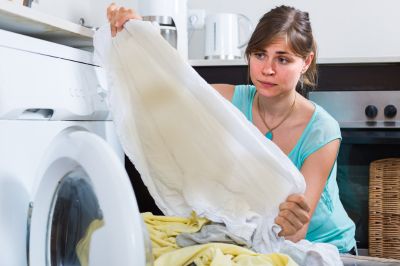
Best Dryer Setting to Avoid Color Bleeding
| Fabric Type | Dryer Setting |
|---|---|
| Delicates | Low heat or air dry |
| Cotton | Medium heat |
| Synthetics | Low to medium heat |
| Wool | Air dry or low heat with caution |
| Silk | Air dry or low heat with caution |
| Denim | Medium to high heat |
| Towels and bedding | High heat |
| Athletic wear | Low to medium heat |
| Formalwear | Air dry or low heat with caution |
This table provides general recommendations; it’s crucial to refer to the care labels on your clothes for specific drying instructions.
Why Should You Sort Laundry by Color?
Separating white and colored laundry has been a standing instruction for ages. You can also sort laundry by fabric type, weight, and stain type.
The reasons we recommend sorting laundry by color are:
i. Colorfastness
Not all garments are colorfast, meaning they may release dye during washing. Sorting laundry by color helps prevent color bleeding or transfer from occurring, preserving the original colors of the garments. Dark-colored, vibrant garments, or newly bought clothes, are more likely to release dye molecules.
ii. Dye Stability
Different dyes used in fabrics have varying levels of stability. Sorting laundry by color helps prevent garments with less stable dyes from coming into contact with others, reducing the risk of color bleeding or fading.
Related: Can you dry lights and darks together?
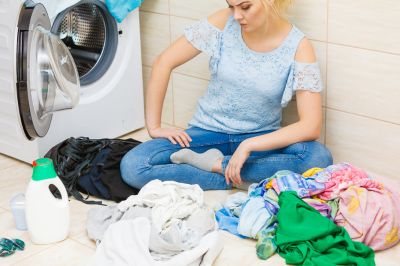
Tips for Safely Drying Whites and Colors Together
- Sort Similar Colors: Group similar-colored items together to reduce the likelihood of color bleeding. For example, separate dark colors from lighter ones.
- Colorfastness Test: Check the colorfastness of your garments by conducting a colorfastness test before drying them together. This involves dampening a hidden area of the garment and pressing a white cloth against it to check for color transfer.
- Use Proper Drying Settings: Set the dryer to a low or medium heat setting to minimize the potential for color transfer. High heat can cause dyes to release and transfer more easily.
- Avoid Overloading: Overloading the dryer can increase friction between garments, increasing the risk of color transfer. Leave enough space for airflow and movement between items.
- Remove Promptly: Immediately remove the dried laundry from the dryer to prevent prolonged contact between garments that could lead to color transfer.
- Use Color-Catching Sheets: Consider using color-catching sheets or laundry products designed to absorb released dyes. These sheets can help trap and prevent dyes from transferring onto other garments.
Tips for Drying Clothes Fast
- High Spin Cycle: Before drying, use a high spin cycle in the washing machine to remove excess water from the clothes. This reduces the drying time required.
- Separate Heavier Items: Heavy items like jeans or towels take longer to dry. Separate them from lighter garments to prevent the lighter ones from being weighed down and drying more slowly.
- Increase Airflow: Enhance airflow around the drying area. Place clothes on a drying rack, use a fan, or open windows to improve air circulation, which helps moisture evaporate faster.
- Use Absorbent Towels: Lay clothes on clean, absorbent towels to soak moisture more effectively. This can speed up drying by wicking away excess water from the garments.
- Dry in Sunlight: If weather permits, hang clothes outside in direct sunlight. Sunlight aids in drying by providing heat and ultraviolet (UV) radiation, which helps evaporate moisture from the fabric.
How to Store Clothes After Drying?
Here are a few tips for storing clothes after drying.
- Store in a cool and dark place away from dust and sunlight. The best options are a basement or a closet.
- You can opt for storage containers manufactured to protect the clothes from dust and sunlight.
- Avoid storing clothes in a plastic bag. It may lead to trapping the moisture, eventually leading to mildew growth.
- Avoid hanging them on a hanger or clothesline for a long. It will stretch out the garment, deforming its shape.
- Do not fold the clothes tightly when wet. It may develop creases and wrinkles on the clothes.
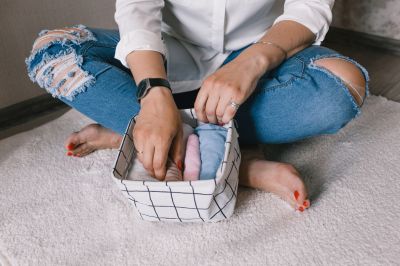
- What colors cannot be mixed in the laundry?
Light colors like beige, light blue, lilac, pink, salmon, and yellow, and dark colors like blue, brown, burgundy, charcoal, orange, and red should never be mixed.
- Can you mix colors in the washer?
It’s not wise to mix colors in the washer. Always sort garments according to color, stain type, and care label
Conclusion
Drying whites with colored clothes is risky. It may ruin your whites by coloring them with any random color; separating whites from colors while laundering is the best option.
Drying different colored garments can result in color transfer, fading, and staining. Dryer heat causes the fabric to open up, releasing residual dyes. Mixing colors in the dryer can lead to color bleeding and damage the dryer and clothes.
But does that suffice? No, you must not only separate colored clothes but also sort your garments by thickness, stain type, and care label. This practice of sorting the garments will keep them in good shape for a long time.
Related: Minimum temperature for drying clothes outside
Related: Dryer Balls vs. Dryer Sheets.

